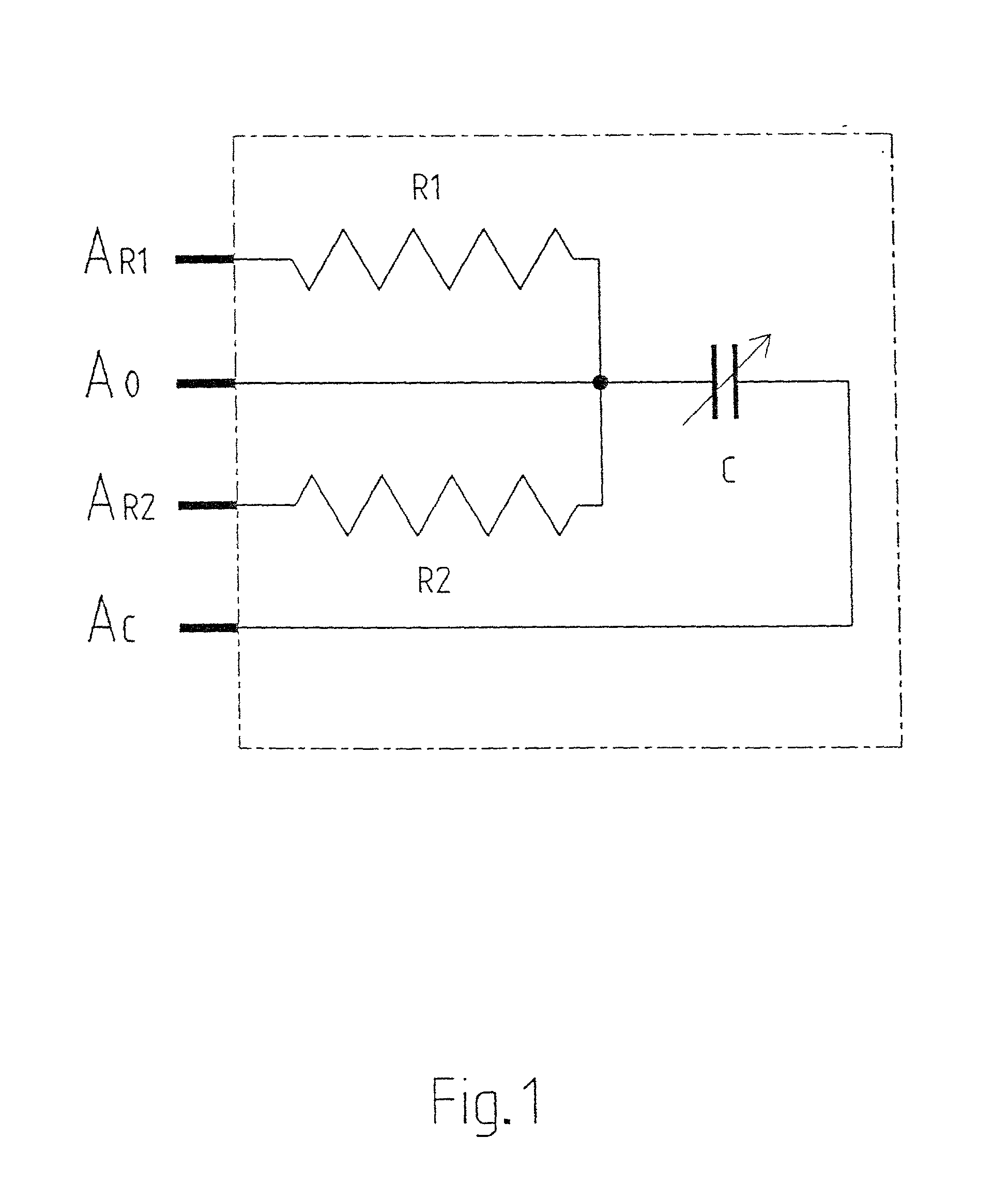Combination pressure sensor with capactive and thermal elements
a technology of capactive and thermal elements, applied in the direction of fluid pressure measurement using capacitance variation, instruments, measurement devices, etc., can solve the problems of inability to operate in higher pressure ranges, inability to reliably measure higher pressures above a few 10 mbar, inaccurate, etc., to achieve economic production form, high accuracy, and convenient handling
- Summary
- Abstract
- Description
- Claims
- Application Information
AI Technical Summary
Benefits of technology
Problems solved by technology
Method used
Image
Examples
Embodiment Construction
[0029] The pressure sensor according to the invention is arranged in a vessel or a chamber and (FIG. 1) is designed in principle so that a capacitive measuring element having a capacitance C whose value is dependent on the gas pressure is arranged between the earth connection A.sub.0 and a capacitor connection A.sub.c. Its value is monitored in a known manner by means of a suitable evaluation circuit, which derives a first pressure signal from it. The first pressure signal is derived by means of an essentially linear characteristic from the original value reproducing the value of the capacitance C. The offset which usually occurs in the case of capacitive measuring elements and impairs the long-term stability can be compensated by a method described further below.
[0030] A first resistor R.sub.1 and a second resistor R.sub.2, which represent heating elements of a thermal conductivity measuring element, are arranged between the earth connection A.sub.0 and a first resistor connection ...
PUM
| Property | Measurement | Unit |
|---|---|---|
| distance | aaaaa | aaaaa |
| thickness | aaaaa | aaaaa |
| thickness | aaaaa | aaaaa |
Abstract
Description
Claims
Application Information
 Login to View More
Login to View More - R&D
- Intellectual Property
- Life Sciences
- Materials
- Tech Scout
- Unparalleled Data Quality
- Higher Quality Content
- 60% Fewer Hallucinations
Browse by: Latest US Patents, China's latest patents, Technical Efficacy Thesaurus, Application Domain, Technology Topic, Popular Technical Reports.
© 2025 PatSnap. All rights reserved.Legal|Privacy policy|Modern Slavery Act Transparency Statement|Sitemap|About US| Contact US: help@patsnap.com



